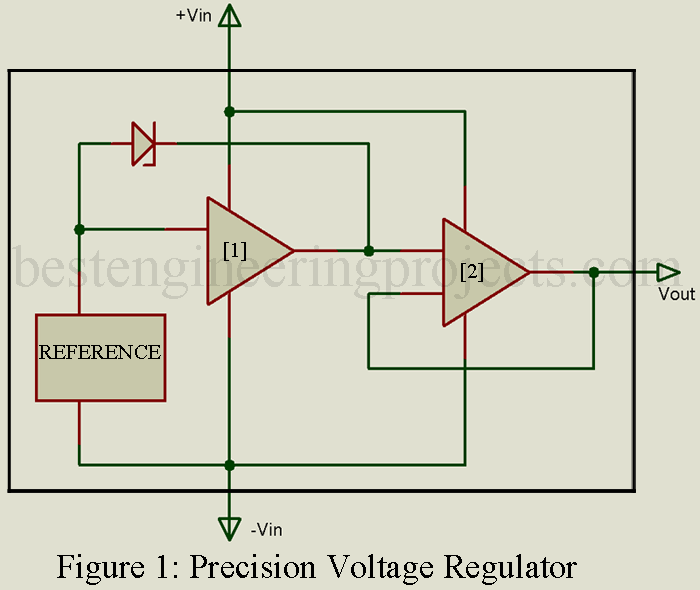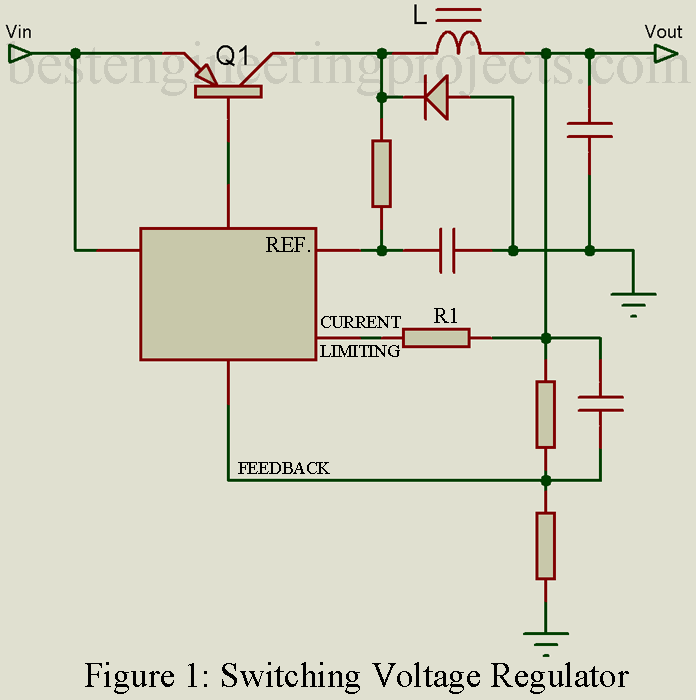There are various type of voltage regulator available in market, every single types of voltage regulator have it’s own advantage and applications. We have already discussed various type of voltage regulator like fixed voltage regulator, Adjustable voltage regulator, Tracking and floating voltage regulator. Here, in this article we are going to discuss about Precision voltage regulator and Switching voltage regulator. At first let’s see what is precision voltage regulator.
Description of Precision Voltage Regulator
High-precision voltage regulators are available for fixed output or adjustable output as well as for most positive and negative polarities. The simplified block diagram of figure 1 illustrates the use of a reference amplifier (1) with a special temperature-compensated zener diode connected between its input and output. This, in additional to a highly stable reference source, provides the precision regulation. In all other respect precision voltage regulators operate in the same basic manner as the other, fixed or variable output, regulators.
Key Parameters of Precision Voltage Regulator
Essentially the same as for fixed and variable output voltage regulators, except for the following:
Line regulation: The change of output voltage for a corresponding change in input voltage. A typical value is /V.
Load regulation: The change of output voltage for a corresponding change in output current /V is a typical value.
Applications
In instrumentation and analog computation systems, the precision of the power-supply voltages often requires the use of precision voltage regulators.
Representative Part Number: National Semiconductor LH0075.
Comments
The full precision capability of the IC may be lost when external transistors and resistive networks with less limited tolerances are used.
Switching voltage regulator
Switching regulators are based on chopping the unregulated input voltage with a saturated transistor and then filtering the output with an L-C network, as illustrated in figure 1. Voltage regulation is accomplished by varying the duty cycle of the switching transistor Q1. Compared to the linear voltage regulators, the switching regulator offers much greater efficiency but requires more external components, particularly an iron core inductors or transformer and filter capacitor. The transient response is limited by the chopping frequency, and the characteristics of the external components, particularly the switching transistor and the diode, can be quite critical. Switching regulators are generally more cost effective than linear voltage regulators above 100 watts or in applications where the 60 Hz components used with linear regulators exceed the space and weight limitations.
Key Parameters of Switching Voltage Regulator
Essentially the same as fixed output voltage regulators, except for the following:
Output voltage temperature coefficient: The change in output voltage as the junction temperature changes. Depending on the external transistor and diode characteristic, a 0.3% variation over the allowable temperature range is typical.
Maximum operating frequency: The highest switching frequency of which the regulator is capable. 300 kHz is a typical value.
Noise characteristic: High-frequency noise is always generated at harmonics of the switching frequency. Electromagnetic shielding and efficient filtering are required in most applications.
Applications
Switching power supplies and regulators are generally used in vehicular, aircraft and space electronics where size and weight limitations exist, and where equipment often has to run from rechargeable battery supplies.
Representative Part Number: Exar XR-494.
Comments
Switching power supply and regulator (also known as a pulse width modulating regulator) design is a highly specialized field and requires special expertise. The problem of electromagnetic interference, caused by switching power supplies, has been the subjected of extensive investigation.

